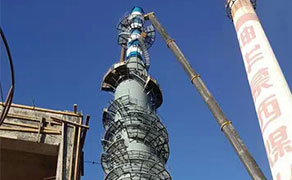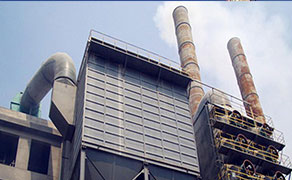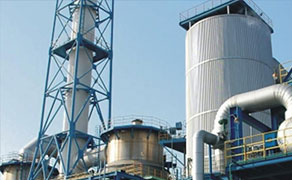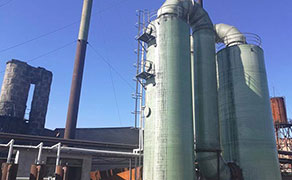-
公司优势
公司成立于2016年,注册资金为2068万元整。生产基地坐落于安徽省合肥市巢湖市亚父路8号。
-
业务广泛
公司环保工程业绩遍布全国10多个省、市、自治区获得了较高的知名度和认同度,为我国钢铁,焦炉,建材等行业节能减排出做贡献。
-
服务优势
贯彻“为客户创造价值、为员工创造未来”的企业宗旨,秉着“质量为主,信誉为本、挑战无限、成就未来”的发展理念。
-
组织保障
针对工程的工期要求、质量要求,建立健全项目经理部组织机构,成立各职能部门,在机构组织上,确保质量目标的实现。
OUR ADVATAGES
 公司优势
公司优势
公司成立于2016年,注册资金为2068万元整。生产基地坐落于安徽省合肥市巢湖市亚父路8号。
 业务广泛
业务广泛
公司环保工程业绩遍布全国10多个省、市、自治区获得了较高的知名度和认同度,为我国钢铁,焦炉,建材等行业节能减排出做贡献。
 服务优势
服务优势
贯彻“为客户创造价值、为员工创造未来”的企业宗旨,秉着“质量为主,信誉为本、挑战无限、成就未来”的发展理念。
 组织保障
组织保障
针对工程的工期要求、质量要求,建立健全项目经理部组织机构,成立各职能部门,在机构组织上,确保质量目标的实现。
江南网页版登录入口,江南(中国)供应商! 咨询热线:13856579693
27
2022/07
脱硫塔的使用效果与其安装有着不可磨灭的联系,正确的安装方法可以更好地降低设备故障的概率,从而保证设备的安全性,同时也可以提高工作效率,但如果我们操作失误,则会造成不必要的麻烦,接下来我们就来简单介绍一下具体的安装要求。
20
2022/07
工业吸尘器,用以工业生产中收集废弃物,过虑和清洁空气,开展环境清洁的机器设备。工业吸尘器可以吸取各种各样金属材料、非金属材料、油、水等颗粒物及其液體,可以吸取有毒有害气体,在纺织行业中能够提升产品品质,在化学工业中能够回收一些价格昂贵的催化剂等,并且做为一种环境保护设备,工业吸尘器可以合理避免一些职业病的危害,如电焊工尘肺、鞋厂白血病等。
13
2022/07
湿法烟气脱硫吸收塔,烟囱内筒体防腐材料的选择须考虑以下几个方面:耐磨性好:烟气中含有大量的灰尘,玻璃钢脱硫塔,同时在腐蚀性介质作用下,磨损的实际情况可能更加明显,因此要求防腐材料具有良好的耐磨性;具有一定的抗弯性能
06
2022/07
脱硝塔80%的脱硝是造成脱硝设备堵塞的原因,在塔内进行了吸收和分析塔内分离的硫不能随脱硝液及时从塔中取出,而是单纯的附着在填料表面,造成气偏流,塔长时间堵塞。
29
2022/06
江南网页版登录入口,江南(中国)是通过用江南网页版登录入口,江南(中国)将废气中的污染物吸附在表面上,然后就可以起到净化的作用。这样的一个设备净化效果是非常好的,今天我们就来说说江南网页版登录入口,江南(中国)应该如何保养。
22
2022/06
脱硫塔是常用的一种废弃处理设备,主要工作原理就是利用活性炭的吸附性将废气中的有害物质吸附过来达到净化的效果,而各类除尘器都有它的特点,下面小编就给大家介绍一下脱硫塔的特点有哪些。
15
2022/06
脱硝设备的应用还是很常见的,因其操作简单并且净化效果好很受欢迎。但活性炭是需要定期更换的,所以成本较高,今天也来给大家介绍一下其性能。
08
2022/06
当下看来人们对于除尘器的认知度是比较高的,这也是为了解决废气问题,以保证环境不会造成严重污染,但是机器难免会在长时间使用下产生磨损,今天就带大家了解一下除尘器在使用后要做好的维护工作。
01
2022/06
对工业废气处理设备熟悉的人都知道工业废气处理设备之所以能完成废气处理工作是与它的组成部件分不开的,那么工业废气处理设备有哪些部件呢?下面安庆废气处理设备厂家就为大家详细介绍一下。
24
2022/05
江南网页版登录入口,江南(中国)是常见的废弃处理设备,一般在选用设备处理废弃时需要考虑到废气中的污染分子、浓度、排放量,还有就是去除的工作效率,从这两个方面来考虑选用哪种处理设备。
17
2022/05
现在对工业废气排放监管非常严格,所有废气排放须达到相关标准才可以。废气一般需要用除尘器进行净化,下面我们一起了解一下它的工作原理。
10
2022/05
脱硝设备可以达到好的吸附空气有害物质的目的,并且在区域内使用可以保证环境质量,杜绝污染产生,今天就带大家了解一下脱硝设备的利用所能带来的好处。